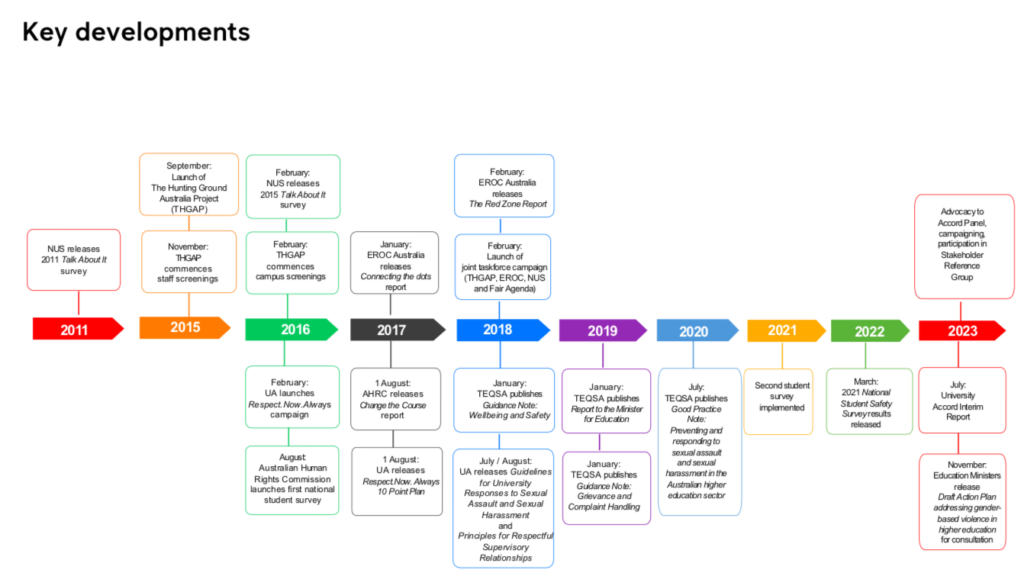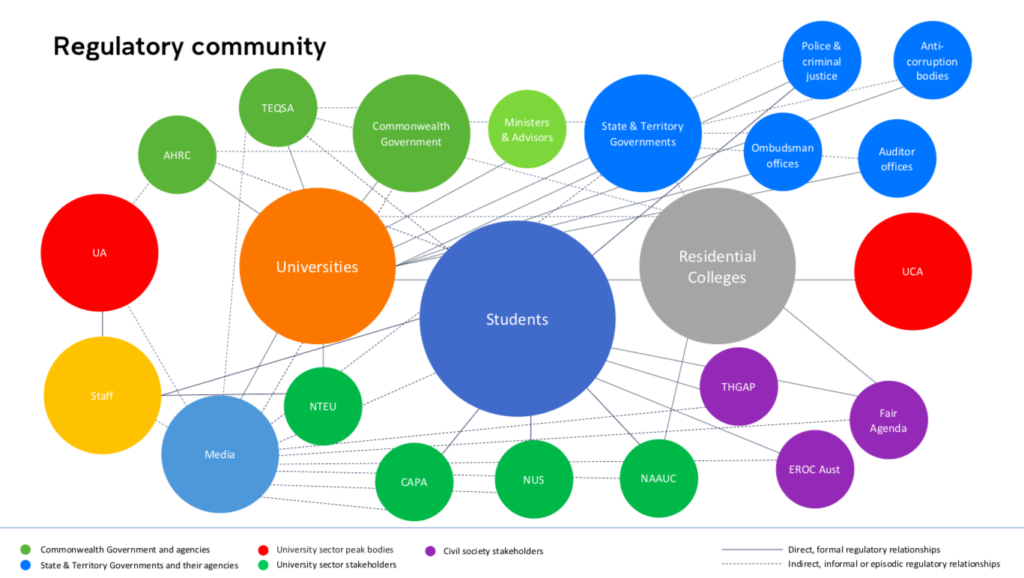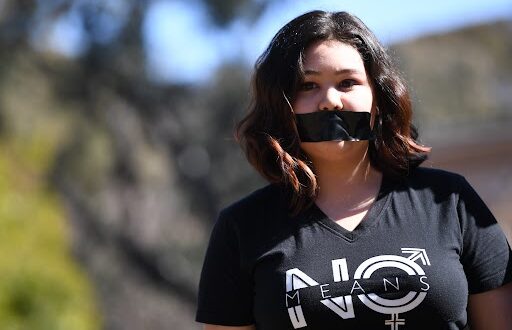The Australian Human Rights Commission’s (AHRC) landmark Change the Course report in 2017 revealed shocking numbers of sexual violence against university students and a lack of adequate university policies and practices to address the issue.
The AHRC had been asked by 39 universities to look into the 'nature, prevalence and reporting of sexual assault and sexual harassment', and ran the first National Student Safety Survey (NSSS), which gathered data relevant to university student experiences of sexual harassment and sexual assault.
It surveyed over 30,000 students and found that one in five had been sexually harassed in a university setting, and 1.6 per cent sexually assaulted either at uni or travelling to or from campus.
Of those who were sexually assaulted, only 13 per cent made a formal complaint to the university, and only six per cent of those who were sexually harassed did so.
The report made nine recommendations, one of which focused on ensuring accessible and easy to understand reporting processes were made common knowledge among the student cohort.
An audit of current processes and counselling services, and ongoing student surveys to track the prevalence of incidents, were also recommended.
A subsequent 2021 NSSS was run by the Social Research Centre and funded by Universities Australia (UA).
It surveyed 43,812 students to find out the prevalence of sexual harassment and assault, including when and why it occurred.
It also investigated awareness of and responses to reporting incidences of sexual violence.
The second NSSS found one in six university students had been sexually harassed, and one in 20 sexually assaulted, since starting university. These assaults occurred mostly in club or society events and spaces, or in residential accommodation.
The second survey also included more anecdotal and qualitative evidence of sexual violence on campus, including testimonies from anonymous students.
Students most at risk were female, sexually diverse, or disabled undergraduates who live on campus, and perpetrators were overwhelmingly men.
Only one in 20 students who were sexually assaulted made a formal complaint, and of those only a third were satisfied with that process.
When the results were released in 2022, showing no improvement from the earlier survey, both UA and individual universities initiated anti-sexual violence campaigns.

Created and supplied by Dr Allison Henry.
As a result, "we're now starting to see quite a few unis have action plans. Nearly all Australian universities now have standalone sexual assault or sexual harassment policies, which is great. They weren't there a decade ago," according to Dr Alison Henry, a researcher in the sexual assault area.
But how did we get here?
Dr Henry, whose PhD thesis focused on regulatory responses to sexual assault and harassment in Australian university settings, said the problems started with the way in which universities were originally established in Australia.
"Universities are regulated and funded at a federal level, but they're actually set up under state and territory legislation," she explains.
"And underneath that ... all universities are independent, self-regulating autonomous bodies."
These means that universities are essentially autonomous and independent, and don't tend to work in unison to affect changes.
It's consequently not possible for government to implement changes and, Dr Henry says, there hasn't been the political will to "use the levers that are available within the regulatory and the legislative framework".
UA has tried to fill that gap with providing best practise guidelines and providing training, but as a member organisation rather than a regulatory one, can only do so much.
"Even though they've put some good materials out, they haven't followed up with seeing who's picking it up. And there's no obligation on the universities to pick it up," Dr Henry said.
There is a regulator in the sector, the Tertiary Education Quality and Standards Agency (TEQSA). After the Change the Course report was released in 2017, it was tasked with monitoring the sector's responses to its findings.
TEQSA has also tried to guide the sector, creating notes and resource links, but as each university has its own approach, this hasn't always been effective.

Created and supplied by Dr Allison Henry.
"You can go to each of the 39 university websites and they call [sexual assault and harassment] different things. They have different disclosure or reporting mechanisms," Dr Henry said.
"Some of them have online forms, some of them have an email address, some of them have 1-800 number."
Dr Henry said she understands future regulatory and legislative reform will stem from the Department of Education's draft Action Plan addressing gender-based violence in higher education.
The plan has seven recommendations, one of which is establishing a National Student Ombudsman that can investigate and resolve dispute.
Another is increasing transparency around data collection, reporting mechanisms and accountability.
The Universities Accord Interim Report, released in early January, recommended five priorities for action.
Priority five outlined the immediate need for better university governance, through state and territory government and university collaboration, to improve student staff and safety on campus.
The aforementioned reports, along with other possible recommendations made in the soon-to-be-released Universities Accord Final Report, aim to tackle the worsening sexual violence issue by bringing the universities together to drive reform as a whole sector.
This story is an extension of our Campus Podcast: The vexed question of sexual assault in universities, in which education editor Erin Morley interviewed Dr Allison Henry .
Do you have an idea for a story?Email [email protected]
 Campus Review The latest in higher education news
Campus Review The latest in higher education news

